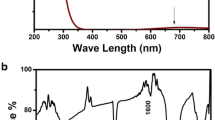Abstract
So far there is no an effective method for fast killing of algae and bacteria in the course of conveying ship’s ballast water. With a physical method of strong electric-field discharge, O2 in air and H2O in seawater are ionized and dissociated and then dissolved into seawater to generate •OH radicals. In the experimental system of 10 t/h, the algae and bacteria are rapidly killed using •OH radicals with the low •OH concentration of 0.7 mg/L within only 6 s, and D-2 ballast water discharge standard of IMO is realized. Under fluorescence microscope, cell morphological changes such as the disruption of cell membrane, sometimes to the point of cell lysis, has taken place when cells are exposed to a killing dose of •OH.










Similar content being viewed by others
References
Carlton JT (1994) In: Proceedings of conference workshop on NOAA 5–11
Ruiz GM, Fofonoff PW (2000) Annu Rev Ecol Syst 31:481
Pimentel D, Lach L, Zuniga R, Morrison D (2000) Bioscience 50(1):53–65
Mackenzie M et al (1999) New Sci 162:18–19
Bai MD, Bai XY, Zhang ZT, Yang B (2005) Plasma Chem Plasma Process 25(5):530–538
Tang Z, Butkus MA, Xie YF (2006) Mar Environ Res 61:410–423
Gollasch S, David M, Voigt M, Dragsund E, Hewitt C, Fukuyo Y (2007) Harmful Algae 6:585–600
Zhang S, Chen X, Yang D et al. (2003) Effects of the chlorination treatment for ballast water 2nd international ballast water treatment R&D symposium IMO, London, pp 21–23
Oemcke DJ, van Leeuwen J (2005) Water Res 39:5119
Debra MW, Chris O, Mike DS et al (2004) Mar Pollut Bull 49:844
Techcross Inc., South Sea Institute of KORDI (2008) Application for final approval of the electro-clean system (ECS) submitted by the Republic of Korea, Mar Environ Prot Comm, 58th session Agenda item 2 (MEPC 58/2), 20 March
McCollin T, Quilez-Badia G, Josefsen KD, Gill ME, Mesbahi E, Frid CLJ (2007) Mar Pollut Bull 54:1170
Bai XY, Zhang ZT, Bai MD, Yang B (2005) Plasma Chem Plasma Process 25(1):41–54
Zhitao ZT, Bai MD, Bai XY et al (2004) J Adv Oxid Technol 7(2):178
Liu C, Zhang ZT, Zhu XF, Yin Y (2006) Plasma Sci Technol 8(6):693
Quan X, Zhang YB, Chen S, Zhao YZ, Yang FL (2007) J Mol Catal A: Chem 263(1–2):216
Jen J-F, Leu M-F, Yang TC (1998) J Chromatogr A 796(2):283
Acknowledgments
This work was supported by the Major Project of National Science and Technology Support Program (Grant No. 2006BAC11B06) from the Ministry of Science and Technology, and Chang Jiang Scholar Program from the Ministry of Education of China.
Author information
Authors and Affiliations
Corresponding author
Rights and permissions
About this article
Cite this article
Bai, M., Zhang, Z., Xue, X. et al. Killing Effects of Hydroxyl Radical on Algae and Bacteria in Ship’s Ballast Water and on Their Cell Morphology. Plasma Chem Plasma Process 30, 831–840 (2010). https://doi.org/10.1007/s11090-010-9252-5
Received:
Accepted:
Published:
Issue Date:
DOI: https://doi.org/10.1007/s11090-010-9252-5




